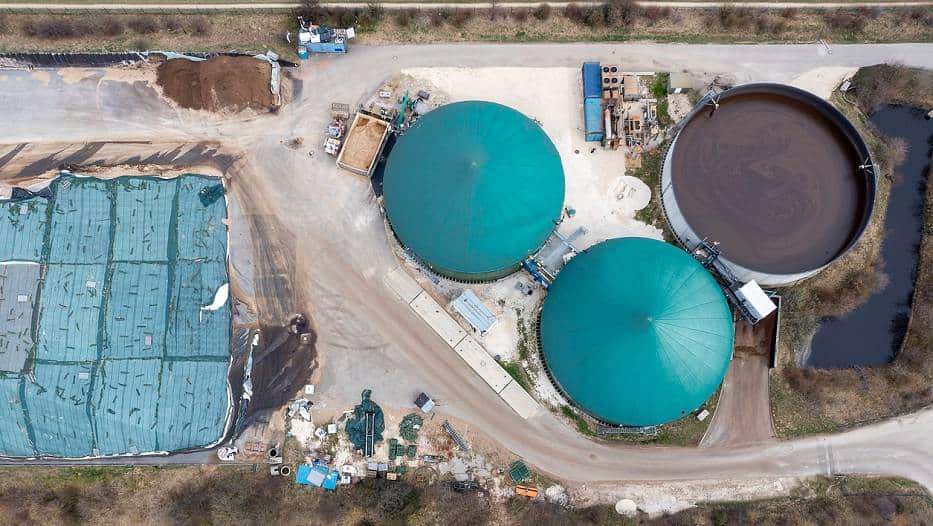Biomethane is a 100% green, clean, and sustainable fuel. We define this gas and its production, uses and benefits, as its application would lead to a circular economy with a reduction of waste and methane emissions into the atmosphere.
What is biomethane?
Biomethane is a fuel gas, with properties similar to those of natural gas, which is beginning to establish itself globally as the solution for reducing the carbon footprint. Its domestic and industrial uses include electricity, factories, heating, and transportation.
Despite being a lesser known gas than green hydrogen, its introduction will bring not only environmental benefits, but will also boost the demographic challenge in rural areas. This is stated in the executive summary of the Study of Biomethane Production Capacity in Spain, 2023, by the Spanish Gas Association (Sedigas): “Introducing biomethane into the energy mix is essential for:
1. Meeting decarbonization goals.
2. Facilitating greater energy independence from the outside.
3. Helping to reduce the problems caused by poor waste management.
4. Attracting investment in certain primary sectors.
5. Helping to set up jobs in rural areas.”
How is biomethane produced?
Biomethane is produced from organic wastes such as urban foodstuffs, cow manure, pig slurry, crop waste, sewage sludge, and agricultural waste.
Its production process consists of:
1. Anaerobic fermentation (absence of oxygen) of organic waste.
2. In fermentation, the bacteria break down organic waste into biogas (which is a mixture of methane, carbon dioxide, and hydrogen).
3. The biogas is purified to remove carbon dioxide and hydrogen and is ultimately converted into biomethane. The methane composition is 90% or more and allows it to be injected into gas installations to be consumed, even more efficiently than fossil fuels.
How much biomethane can we produce?
Given that the goal is to achieve energy independence and curb climate change, the European targets have been increased. In 2021, more than 18.4 bcm (18.4 billion m3) of the energy mix (biogas and biomethane) were produced; however, the European Commission, in its REPowerEU action plan, proposes to produce between 35-45 bcm by 2030.By 2050, it is estimated to generate between 95 and 167 bcm, which would mean the replacement of between 23% and 41% of the EU’s gas consumption in 2021 (412 bcm), according to the European Biogas Association’s 2022 report.
In Spain, a Biogas Roadmap is being developed that, in Sedigas’s opinion, “is very unambitious.” The Roadmap establishes “a biogas production of 10.4 TWh (terawatt/hour) and a replacement of gas consumption with biomethane of 1%, far from the targets established by the European Union (EU) and by other European countries.”
According to the most conservative EU estimates, as already considered in 2018 by the Spanish Institute for Diversification and Saving of Energy (IDAE [Instituto para la Diversificación y Ahorro de la Energía]), Spain is between 20-34 TWh/year, which would mean a gas replacement between five and nine percent. In this case, for the production of biomethane, waste from agriculture, livestock, the agri-food industry, municipal solid waste, and waste from water treatment would be taken into account.
However, experts indicate that other sources can be incorporated “such as catch crops, forest biomass, and biogas from landfills.” These aggregations would increase biomethane production in Spain significantly: between 100 and 190 TWh/year. “The results obtained suggest a total accessible potential in Spain of 163 TWh/year, in line with other studies.” And later on they conclude: “Taking into account the potential of 163 TWh calculated in this study, biomethane could cover 43% of the demand for natural gas in Spain, equivalent to 100% of domestic consumption and 48% of industrial consumption.”
Distribution of biomethane production in Spain
Sedigas wanted to demonstrate in its report the enormous potential that the different autonomous communities have for generating biomethane. This production “varies depending on many factors, such as the type of waste available, its quantity, or the potential for energy production from this waste.” As can be seen in the graph, it is estimated that Castile and León and Andalusia would be at the top of the ranking due to their high activity in the primary sector.
With the weight of this data, and taking into account the targets set by the EU, the report also includes the need to install a network of plants that enable the production of biomethane. It identifies 2,326 potential plants differentiated by type, which would entail a total investment of €40.495 billion.
• Agro-industrial waste plants + WWTP + MSW
• Catch Crop Plants
• Residual Forest Biomass Plants
What are the benefits of biomethane?
At the beginning we mentioned several factors that emphasize the importance of moving towards biomethane production:
• The need to decarbonize our economy
• Energy independence
• Improve waste management
• Invest in the primary sector and reverse the situation of depopulation in rural areas.
In addition to all of the above, this sustainable fuel gas offers multiple benefits for humans and the planet:
• It reduces greenhouse gas emissions by being a gas that comes from natural sources. This makes it a clean alternative to fossil fuels.
• It is efficient: Biomethane is a more efficient fuel than fossil fuels, i.e., it produces more energy per unit mass or volume.
• It is cheap: This makes it a more affordable option for carriers and energy companies.
Articles’s autor…






